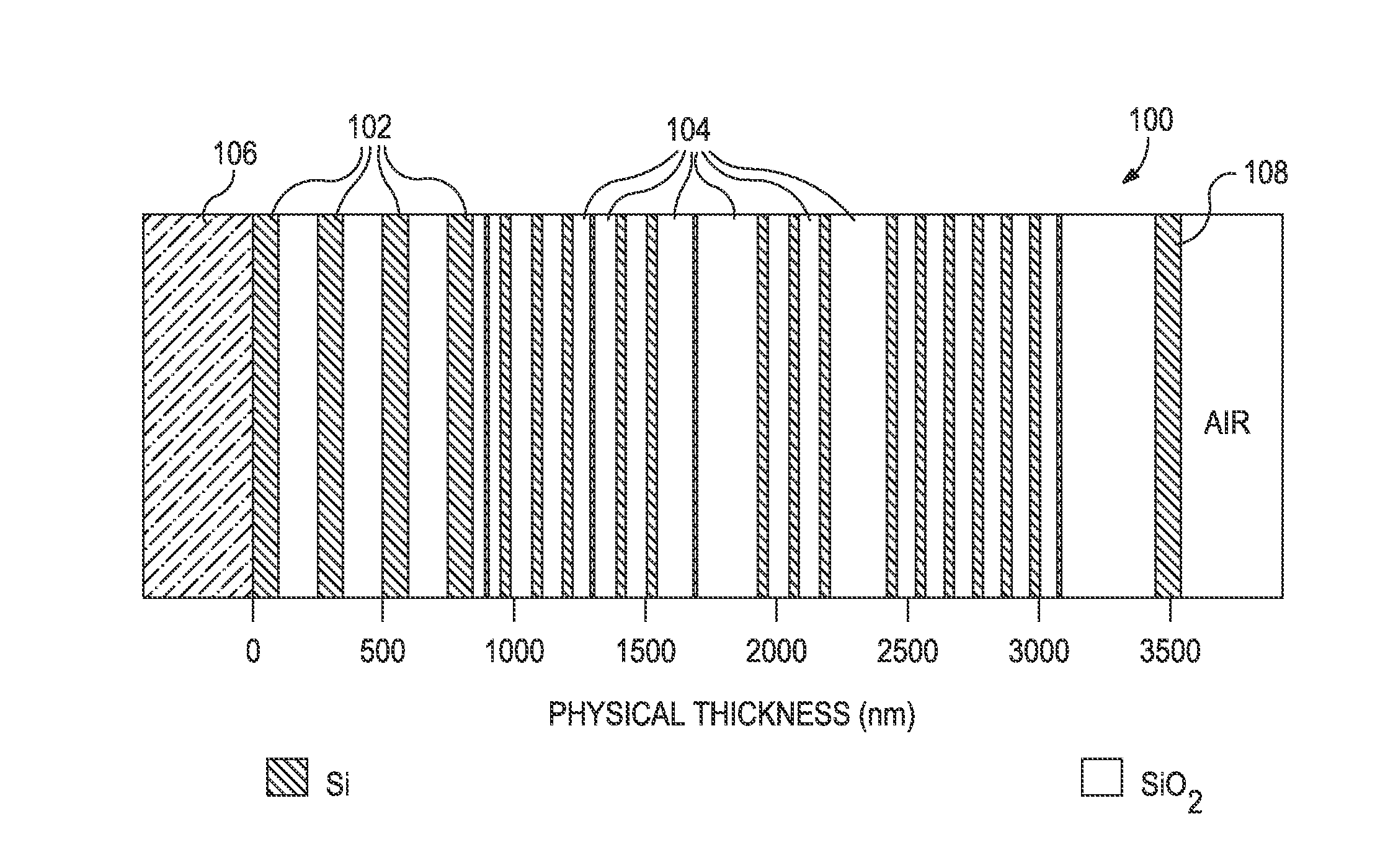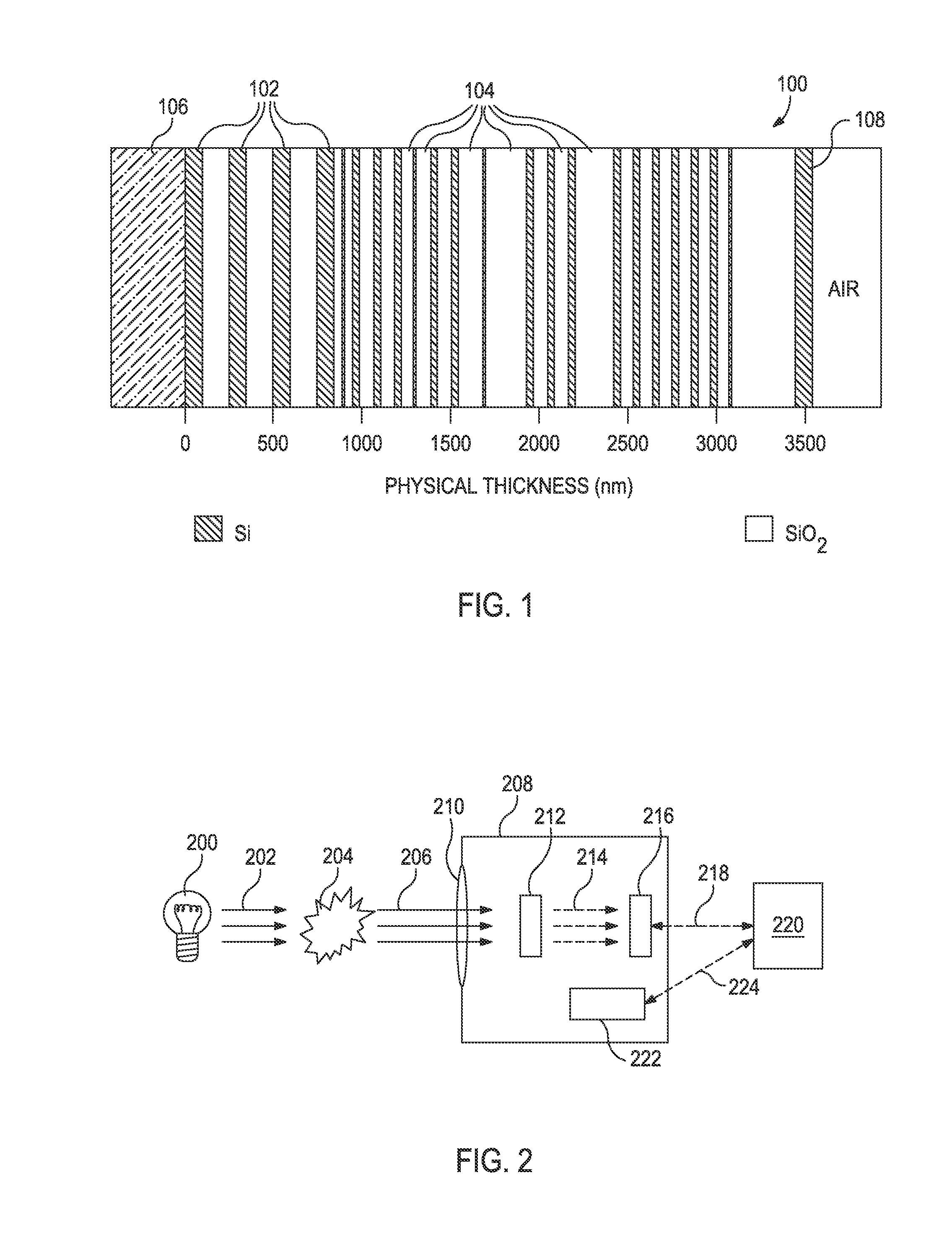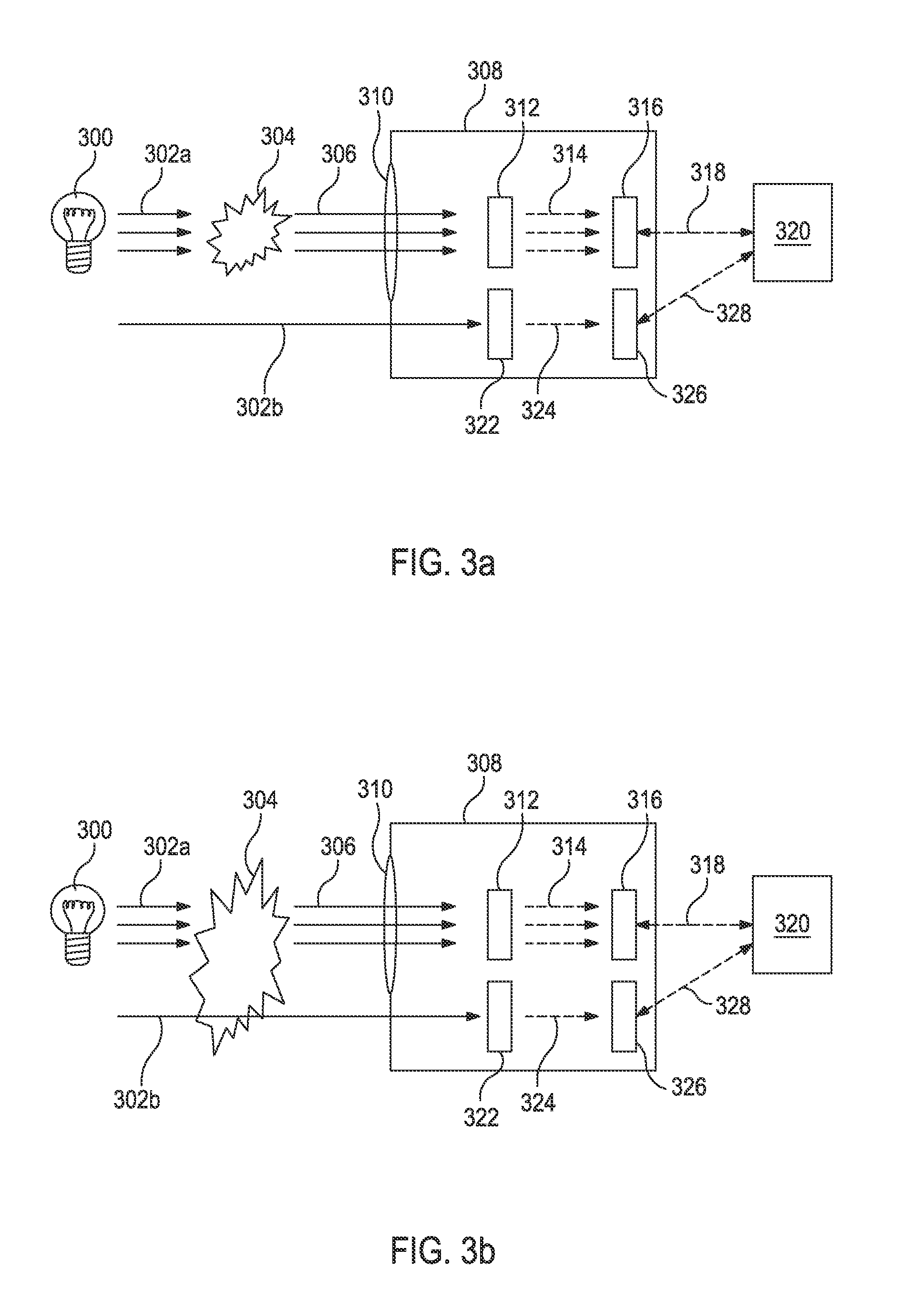Devices Having an Integrated Computational Element and a Proximal Interferent Monitor and Methods for Determining a Characteristic of a Sample Therewith
a technology of proximal interference and computational elements, applied in the direction of optical radiation measurement, instruments, heat measurement, etc., can solve the problems of additional delays, high cost and complexity of spectroscopic instruments transitioning from the laboratory into the field or process environment, and affecting the quality of the sampl
- Summary
- Abstract
- Description
- Claims
- Application Information
AI Technical Summary
Benefits of technology
Problems solved by technology
Method used
Image
Examples
Embodiment Construction
[0021]The present disclosure relates to devices and methods for determining a characteristic of a sample using an integrated computational element, and, more specifically, to devices and methods that can correct a signal received from an integrated computational element in the presence of one or more interferent substances or interferent conditions.
[0022]Although the output simplicity of optical computing devices (i.e., a real number) is one of their strengths, this feature has heretofore limited one's ability to evaluate and correct the output when one or more interferents are present. As used herein, the term “interferent” refers to a substance or condition that changes the output of an optical computing device when evaluating a characteristic of interest in a sample. As used herein, the term “interferent substance” refers to a material that, when present, alters the sample signal associated with an optical computing device. As used herein, the term “interferent condition” refers ...
PUM
| Property | Measurement | Unit |
|---|---|---|
| electromagnetic radiation | aaaaa | aaaaa |
| real-time | aaaaa | aaaaa |
| temperature | aaaaa | aaaaa |
Abstract
Description
Claims
Application Information
 Login to View More
Login to View More - R&D
- Intellectual Property
- Life Sciences
- Materials
- Tech Scout
- Unparalleled Data Quality
- Higher Quality Content
- 60% Fewer Hallucinations
Browse by: Latest US Patents, China's latest patents, Technical Efficacy Thesaurus, Application Domain, Technology Topic, Popular Technical Reports.
© 2025 PatSnap. All rights reserved.Legal|Privacy policy|Modern Slavery Act Transparency Statement|Sitemap|About US| Contact US: help@patsnap.com



